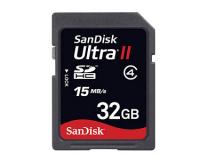An analysis of data densities; SD v. SSD


A colleague (Shaun Redmond) breaks down the price:density ratio of the new SD card:
- The volume of an SD card (W x D x H; mm) is 24 x 32 x 2.1 = 1,612.8 cubic mm or 1.6128 cubic centimeters (cc). (Source: SD Card Association)
- The volume of 1.8-inch x 5mm thick HDD in the MacBook Air (W x D x H; mm) is 54 x 78.5 x 5 = 21,195 cubic mm = 21.195 cubic centimeters (cc). (Source: PhysOrg.com)
- The theoretical data density of a 1.8-inch, 5mm tall HDD/SDD is 21.195 cc divided by 1.6128 cc per SD card times 32GB per SD card or (21.195/1.6128) x 32 = 420+GB!
Shaun used gross volumes in his calculations that include packaging and connectors on the SD card. There may be some efficiencies when packaging the memory in to a larger package (i.e. fewer connectors, plastic skin, etc.). This should allow for an even larger memory package than the 420GB calculated. However there may be a need for additional memory controllers to address the large array of memory modules within a larger 1.8-inch package.
So, what would this new 420GB 1.8-inch SSD cost? (21.195/1.6128) x US$349 = US$4,586.47 based on current retail cost of the new 32GB SD card.
Using the math above, the current 64GB SDD option in the MBA should only cost US$349 x 2 = US$698 based on the price point of the new SanDisk 32 GB SD drive. This is still more than the US$179 retail price of a 60GB 1.8-inch by 5mm thick mechanical drive, but less than the US$999 that Apple charges for the 64GB SSD option.
The gap is between HDD and SSD is narrowing all the time.